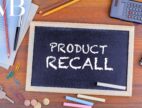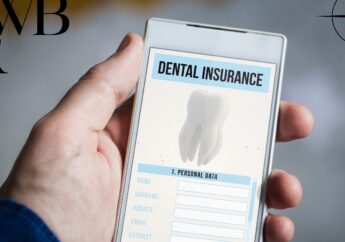How to Effectively Gather Evidence for Your Injury Claim
by Nabamita Sinha Insurance 17 January 2025

Key Takeaways
- Act swiftly to document all relevant details of your injury claim.
- Utilize various forms of evidence, including medical records, photos, and witness statements.
- Stay aware of legal and privacy considerations when gathering evidence.
- The guidance of a legal professional can enhance the success of your claim.
Understanding the Basics of Evidence Collection
Collecting evidence is the bedrock of a successful injury claim. It substantiates your account and legitimizes the need for compensation. Solid evidence can profoundly influence the resolution and outcome of a claim.
Understanding what forms credible evidence takes is pivotal for anyone engaging a personal injury lawyer in Jonesboro. This foundation amplifies the strength of your case, laying the groundwork for a compelling narrative that the court or insurance firms find hard to dismiss.
A personal injury lawyer in Jonesboro can assist those seeking compensation for injuries resulting from accidents or negligence.
With a deep understanding of local laws and the complexities of injury claims, they help clients navigate the legal process, ensuring all evidence is collected and presented effectively.
By working with a skilled attorney, individuals can enhance their chances of securing a fair settlement or verdict, allowing them to focus on recovery. Same time, their legal matters are handled professionally.
The Importance of Timely Documentation
Timeliness in documenting evidence cannot be overstressed. The relevancy and accuracy of medical records and accident reports diminish over time.
Immediate collection of such documents ensures that details remain fresh and secures the authenticity and thoroughness crucial for your claim’s integrity.
Delayed documentation often leads to gaps that can weaken your argument significantly. Quick action in assembling records reinforces your stance, demonstrating a proactive approach to preserving factual evidence.
Types of Evidence You Can Collect
When it comes to collecting evidence for your injury claim case, then here are the important documents that you need to collect and gather before your case.
1. Medical Records
These documents are critical as they directly link the physical harm you suffered to the incident. They include anything from doctor’s notes and diagnostic tests to detailed treatment plans.
2. Photographs and Videos
Visual evidence is incredibly persuasive. Pictures and videos of the scene, injuries, and property damage captured after the event can tell a compelling story, offering angles and depth that words might not fully convey.
3. Witness Statements
First-hand accounts from individuals who observed the incident can be invaluable. Their narratives can corroborate your story and add an element of reliability to your injury claim.
4. Police Reports
Particularly crucial in traffic accidents, these reports contain an objective and official account of the events, observations, and conclusions noted by law enforcement at the scene.
Key Types of Evidence In Personal Injury Claim
When preparing for your personal injury case, you need to gather certain types of evidence to make your injury claim.
An experienced personal injury lawyer, can easily guide you and help you to gather all the necessary to fight injury your claim.
Here are the key types of evidence that includes:
- Medical records.
- Photographs and videos.
- Police and accident reports.
- Witness statements.
- Expert testimony.
- Employment and financial records.
- Physical evidence and documentation.
- Social media and electronic communication.
The Role Of A Personal Injury Attorney
When you are claiming a personal injury claim, you are definitely going to need a personal injury attorney to fight for you. These are the roles that a personal injury attorney plays during such cases.
1. Utilizing Technology in Evidence Gathering
The advent of technology has severely simplified the process of gathering and preserving evidence. With high-resolution cameras and geo-tagging capabilities, smartphones can quickly capture unequivocal visual evidence.
There are countless apps specifically designed to assist in organizing and maintaining the details of your incident, turning your mobile device into an indispensable tool for collecting and managing evidence.
Embracing technology ensures detailed recordings and helps safeguard the evidence’s authenticity through time-stamping and metadata preservation. Using technology wisely could mean distinguishing between a well-documented case and one lacking substance.
2. Legal Considerations and Privacy
In the rush to gather evidence, it is crucial not to overlook legal and privacy implications. Violating legal standards through improper evidence collection methods or privacy violations can undermine your case and even result in legal repercussions.
Collecting evidence is essential to respect privacy laws and ensure compliance with relevant legal frameworks. Understanding the balance between evidence collection and privacy rights ensures that your evidence holds up if scrutinized in a legal setting.
Being informed on how to collect and handle sensitive information legally will protect both the integrity of your evidence and your claim.
3. Common Mistakes to Avoid
Common mistakes in evidence collection include failing to document thoroughly or relying solely on memory.
Such oversights can lead to discrepancies that weaken your claim. Neglecting to gather comprehensive evidence immediately can leave room for opposing parties to challenge your case. Thoroughness is paramount; over-document than risk forgetting crucial details later on.
4. Hiring a Professional to Assist in Evidence Collection
Navigating the intricacies of evidence collection can be daunting, particularly for those unfamiliar with legal proceedings. Engaging the proficiency of a legal professional can significantly bolster your approach.
Lawyers adeptly identify and emphasize evidence that is most pertinent to your case and its legitimacy. With its knowledge and experience, a professional team can assist you through the whole process, ensuring your claim is comprehensively supported by undeniable evidence.
5. Presenting Your Evidence in a Persuasive Manner
Effective presentation of evidence involves organizing it coherently and logically. A chaotic presentation can detract from the strength of your proof, making it harder for adjudicators to follow your narrative.
Systematically arranging documents, visual evidence, and reports ensures clarity and persuasion, emphasizing the credibility of your claims.
This structured approach underscores the seriousness with which you regard your claim and elevates the likelihood of a favorable resolution. Harnessing the power of a curated and presented compilation of evidence can significantly sway decision-makers in your favor.
Wrapping Up!
When it comes to personal injury claims, you need to understand certain details and facts about the facts, processes and laws of injury claims.
If an unforeseen accident occurs that has affected your life because of someone else, then, in such cases, you are liable for an injury claim. And if you end up winning the case, then you are to get compensation for all your injuries.



































































































